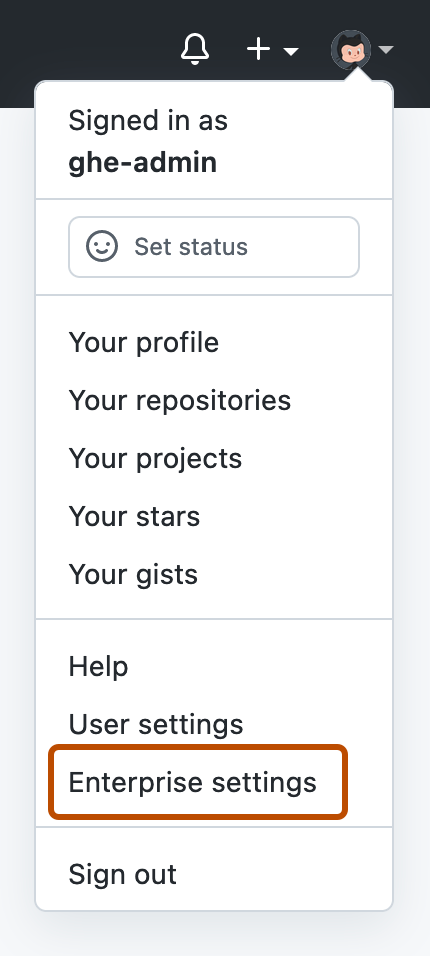About disabling webhooks
You can disable a webhook that was previously enabled for a repository, organization, GitHub Enterprise, or GitHub App.
To disable a webhook, you can choose to deactivate or delete it. When you deactivate a webhook, the webhook deliveries will stop, and you can choose to reactivate the webhook at a later time. When you delete a webhook, it cannot be restored.
For more information, see "About webhooks" and "Creating webhooks."
Disabling a repository webhook
To disable a repository webhook, you can deactivate or delete it. You must be a repository owner, or have admin access in the repository, to disable webhooks.
You can use the GitHub web interface or the REST API to delete a webhook for a repository. For more information about using the REST API to delete a repository webhook, see "Repository webhooks."
-
On your GitHub Enterprise Server instance, navigate to the main page of the repository.
-
Under your repository name, click Settings. If you cannot see the "Settings" tab, select the dropdown menu, then click Settings.

-
In the left sidebar, click Webhooks.
-
Under "Webhooks", locate the webhook you'd like to disable.
-
Disable the webhook by either deactivating or deleting it:
- To deactivate the webhook:
- Click Edit.
- Deselect Active.
- Click Update webhook.
- To delete the webhook, click Delete. This action cannot be undone.
- To deactivate the webhook:
Disabling an organization webhook
To disable an organization webhook, you can deactivate or delete it. Only organization owners can disable webhooks in an organization.
You can use the GitHub web interface or the REST API to delete an organization webhook. For more information about using the REST API to delete an organization webhook, see "Organization webhooks."
- In the upper-right corner of any page on your GitHub Enterprise Server instance, click your profile photo.
- Click Your organizations.
- To the right of the organization, click Settings.
- In the left sidebar, click Webhooks.
- Under "Webhooks", locate the webhook you'd like to disable.
- Disable the webhook by either deactivating or deleting it:
- To deactivate the webhook:
- Click Edit.
- Deselect Active.
- Click Update webhook.
- To delete the webhook, click Delete. This action cannot be undone.
- To deactivate the webhook:
Disabling a global webhook for a GitHub Enterprise
Enterprise owners can disable a global webhook in an GitHub Enterprise.
You can use the GitHub web interface or the REST API to disable a global webhook. For more information about using the REST API to disable a global webhook, see "Global Webhooks."
-
In the top-right corner of GitHub Enterprise Server, click your profile photo, then click Enterprise settings.

-
In the enterprise account sidebar, click Settings.
-
Under " Settings", click Hooks.
-
Under "Webhooks", locate the webhook you'd like to disable.
-
Disable the webhook by either deactivating or deleting it:
- To deactivate the webhook:
- Click Edit.
- Deselect Active.
- Click Update webhook.
- To delete the webhook, click Delete. This action cannot be undone.
- To deactivate the webhook:
Disabling webhooks for a GitHub App
Each GitHub App has one webhook. You cannot delete the webhook, but you can deactivate the webhook. The owner of a GitHub App can deactivate the webhook the app. If an organization has designated any app managers for a GitHub App owned by the organization, the app managers can also deactivate the webhook for the app.
- In the upper-right corner of any page on GitHub, click your profile photo.
- Navigate to your account settings.
- For a GitHub App owned by a personal account, click Settings.
- For a GitHub App owned by an organization:
- Click Your organizations.
- To the right of the organization, click Settings.
- In the left sidebar, click Developer settings.
- In the left sidebar, click GitHub Apps.
- Next to the GitHub App that you want to deactivate the webhook for, click Edit.
- Under "Webhook," deselect Active to disable the webhook.
- Click Save changes.